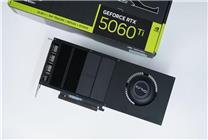Upgrade Your Gaming Experience: How to Manually Switch to AMD FSR 4
On August 30, tech enthusiasts were excited to learn that gamers have discovered a way to upgrade their games from AMD’s FSR 3.1 to the latest FSR 4 manually, without waiting for developers to update the games. This innovative approach was highlighted in a notable blog post, showing players how to replace DLL files to enhance their gaming performance.
What is FSR Technology?
FSR, or FidelityFX Super Resolution, is AMD’s advanced image scaling technology designed to enhance gaming performance. By utilizing cutting-edge optimization techniques and advanced frame generation methods, FSR aims to boost frame rates while maintaining high-quality details. FSR technology allows gamers to enjoy smoother gameplay and better visuals, making it a must-have for serious gamers.
The DLL Replacement Method
This new manual upgrade method is quite similar to past strategies used by Nvidia users to upgrade their DLSS versions over the years. The FSR SDK 2.0 contains three crucial DLL files necessary for this upgrade:
- amd_fidelityfx_framegeneration_dx12.dll
- amd_fidelityfx_loader_dx12.dll
- amd_fidelityfx_upscaler_dx12.dll
To upgrade to FSR 4, users simply need to rename the loader file to "amd_fidelityfx_dx12" and copy all three files into the directory where the original FSR 3.1 DLLs are located. Be sure to delete the old files to complete the upgrade process.
Real-World Application: A Gaming Example
A player demonstrated the DLL replacement technique using "Horizon: Zero Dawn Remake," showing that they successfully switched the FSR version to 4.0.2. This upgrade process has also been tried by several gamers in different titles, with initial feedback indicating stable performance across the board.
Limitations and Considerations
While the method shows promise, players should be aware of certain limitations. For instance, even when using an RX 9000 series graphics card on Linux systems, FSR 4 may not activate. Additionally, players using older Radeon graphics cards will find that they remain on FSR version 3.1.5, indicating that the upgrade cannot surpass hardware limitations.
Potential Compatibility Issues
It’s important to note that this DLL replacement is essentially an unofficial modification, or "mod." While this method has proven successful for Nvidia users with DLSS 2.0 for years, it may bring about compatibility issues for some games. Given that there are instances where game developers fail to implement timely updates for super resolution algorithms, this workaround provides a valuable avenue for gamers seeking the latest enhancements.
Conclusion
The ability to manually upgrade from FSR 3.1 to FSR 4 has opened up exciting possibilities for avid gamers looking to elevate their gaming experience. By following straightforward steps to replace DLL files, players can enjoy improved graphics and smoother gameplay without waiting for official updates.
Related Readings
Are you curious about the latest advancements in gaming technology? Stay tuned for more articles on how to optimize your gaming experience, including tips on hardware compatibility and the best practices for leveraging new tech in your favorite games.
This guide serves as an essential resource for players eager to take control of their gaming experience, allowing them to seamlessly switch to AMD’s latest FSR technology for enhanced visuals and performance.









